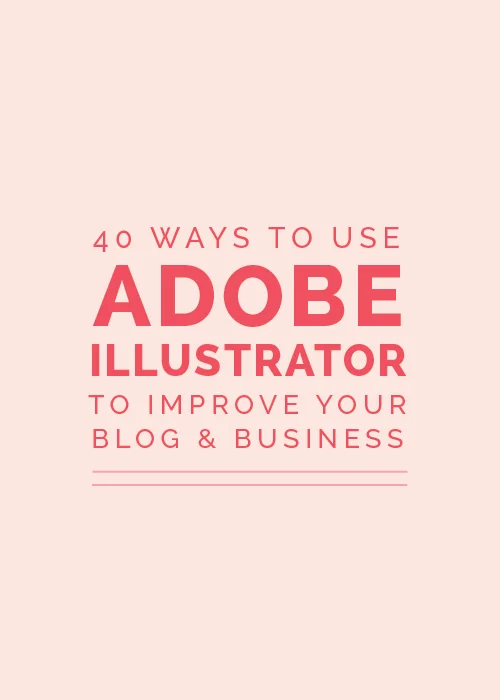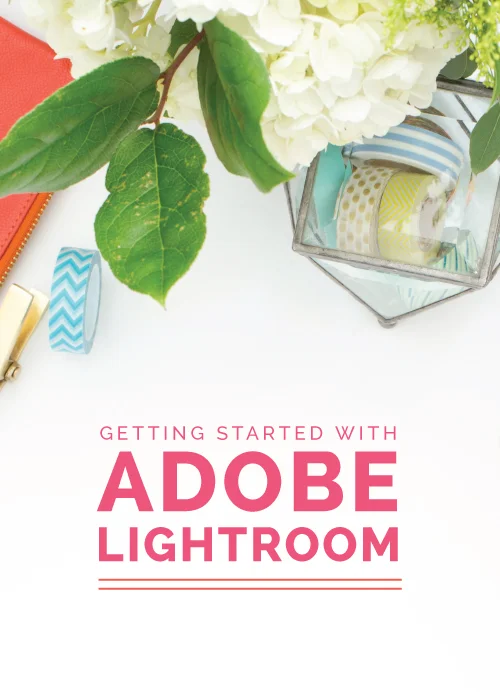The design of your website and the quality of your photography can make all the difference in a first impression of your blog or business. Think about your favorite blogs and brands for a moment; what is it about their websites and social media accounts that make them stand out and appear professional? Usually it’s in their design and photography, which is becoming increasingly important in today’s visual society. If you want to be taken seriously and be seen as a professional, design and photography can go a long way.
I’ve made an effort to help creative entrepreneurs and bloggers with design through offering the Adobe Illustrator e-course, but photography is another key aspect to the visual appearance of a brand. And because great photo editing is just as important as great photo capturing, I’ve recognized a need among readers and colleagues for help learning photo editing software. That’s where this new Elle & Company blog series on Lightroom comes in! I’m doing all of the research and legwork for you, and I’m taking the time to explain and teach you more about using the software each Thursday. My hope is that we can all learn how to utilize Lightroom to the benefit of our brands and websites through more professional photography.
Today I’m starting with a little introduction of sorts to fill you in on what Lightroom is, how it’s different from Photoshop, and how you can benefit from it.
What is Lightroom?
Lightroom is a photo processing software made by Adobe for viewing, organizing, and non-destructively editing digital images. Unlike its “sister software”, Photoshop, Lightroom is much more suitable for working with groups of photos and allows users to easily organize albums. While Photoshop has a wide range of tools and capabilities for graphic editing and is used by many people in the creative industry other than photographers, Lightroom is geared specifically toward helping photographers maintain a streamlined workflow from start to finish. (While I say “photographers,” I’m not just referring to the professionals. If you’re taking photos with your DSLR camera, you’re included in this bunch!)
The Benefits of Using Lightroom
Lightroom is a RAW file converter
With most digital cameras, photos are processed and compressed almost immediately after they’re captured. This keeps file sizes low and takes care of color correction like white balance, tint, and exposure, but it doesn’t give you much control over how the image is processed.
And that’s where RAW files come in. RAW files are different from JPEGs and other photo files because they aren’t images; they’re descriptions. They contain data and information from the image sensor of your camera, allowing you to make decisions in the editing of your photos instead of your camera making the decisions for you. You can think of RAW files as film negatives; all of the information is there, it just needs to be developed.
And that’s where Lightroom comes in. In order to view the unprocessed RAW files as photographs, they have to be decoded/converted. Most image-viewing programs don’t have these capabilities, but Lightroom understands the information and creates a preview of the final image for you. All of the tools and capabilities within Lightroom allow you to do the necessary processing, organize the photos, and save them into common image file formats like JPEG, TIFF, and PNG. So, in a sense, RAW files are like film negatives and Lightroom is your dark room; it takes the code of the original RAW file, deciphers it for you, and allows you to edit and save the images.
Lightroom is an all-in-one photo editing software
Lightroom continues to gain more and more features geared toward streamlining a photographer’s workflow from start to finish. The software application allows you to import images, make edits and post-process, and print and share photographs, all within one environment. Its modules also break things down in a logical workflow, making it intuitive, easier to learn, and faster in performance.
Lightroom is quick
Even though Lightroom is dealing with hundreds, and sometimes thousands, of images, it’s quick. There's no need to wait for an extended period of time to import or save images; Lightroom makes the process speedy by taking advantage of compatible graphic processors.
Lightroom also makes photo editing quicker by allowing you to create presets and save configurations of the adjustment sliders within the Develop module. If you want to apply the same presets to another image, you can apply the effect with just one click! This can save you tons of time and help you develop an editing style at the same time.
Lightroom is non-destructive
Lightroom supports a non-destructive imaging workflow, which means that it won’t make any changes to the original files that you import into the application. Instead, all of the changes are stored in a small format called Metadata, allowing you creative freedom to make changes at any time and save different versions of the same photo. It also means that a large amount of storage won’t be used for each new version.
We’re bound to uncover more capabilities and features as we dive into this photo editing software, and I’m excited to spend the next several Thursdays sharing information and tutorials with you!
What do you think of this new series? Do you have experience using Lightroom? And if so, what are your favorite features?
Lightroom is available in the Adobe Creative Cloud. Learn more about Creative Cloud and the subscription options by reading last week's post here.









